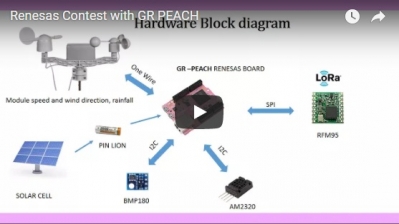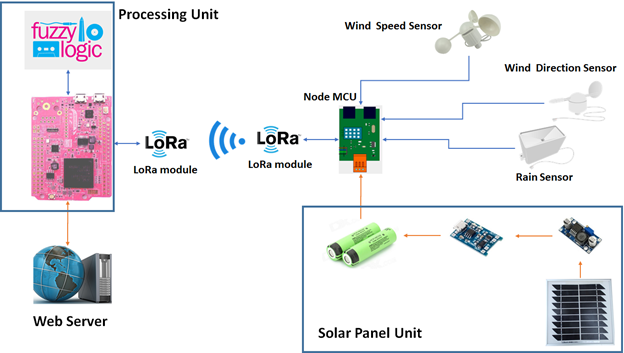Title:LOCAL RAINFALL FORECAST
Displayed Name:Tran Hoang Loc

| Concept / Overview |
|---|
| This project aim to research, design and fabricate a rainfall forecast system based on a wireless sensor network. The environment information is collected from several sensor nodes and then be sent to the base station via LoRa connection. With the help of fuzzy logic, we can predict rainfall possibility at some places. |
Introduction
This project aim to research, design and fabricate a rainfall forecast system based on a wireless sensor network. The environment information is collected from several sensor nodes and then be sent to the base station via LoRa connection. With the help of fuzzy logic, we can predict rainfall possibility at some places.
Nowadays, the climate changes cause a lot of impact on human life in the world, especially the ASEAN countries. In Vietnam, there are a lot of places where terrain is steep, thus the effects of disaster are heavier. In 2016, natural disasters such as the typhoons and flash floods killed nearly 100 people in Vietnam. They also injured more than 220 people and damaged 1600 houses[1]. Therefore, the disaster forecast system has a key role and one of the main elements which need to be predicted is the rainfall. However, the system that using for rainfall prediction has a limit on the cost, the complexity and the installation density. Thus, a system which is low-cost, simple, scalable and acceptably accurate is a suitable candidate for this case.
By designing a wireless sensor network using LoRa technology, the end node is placed at the high-risk areas and measures the environment information such as temperature, humidity, atmospheric pressure… The raw data will be sent to the base station via LoRa communication and processed to calculate the rainfall rate in the next couple of hours. The prediction algorithm using at base station is fuzzy logic. The block diagram of the proposed system is shown on figure 1.

Figure 1. Block diagram of rainfall forecast system
· Sensor node
Sensor node consists of three main elements: sensor unit, energy harvesting unit, LoRa transceiver and micro-controller unit. The collected data from the sensors will be pre-processed and sent to base station via LoRa communication. The LoRa standard is chosen in sensor node thanks to its very low-power-consumption and long-range-communication (about 15km in the case of LOS). These characteristics will provide a Low Power Wide Area Network (LPWAN) that can cover a large area with a very long lifetime. In additional, a solar panel helps further increase the usage time of nodes.
· Base station
By receiving the raw data from the nodes via LoRa communication, GR-Peach module uses the fuzzy logic to calculate the rainfall possibility. All of environment information and the prediction will be uploaded to Internet and then shown on a website.
· Fuzzy Logic
Data included temperature, humidity, atmosphere pressure, etc. will be used as input for fuzzy logic algorithm whose expected output is rainfall possibility.
[1] 90 Vietnamese killed in natural disasters this year, http://www.thanhniennews.com
Movie & Explanation
Source
Finalist, GR-PEACH Design Contest 2017 in ASEAN

